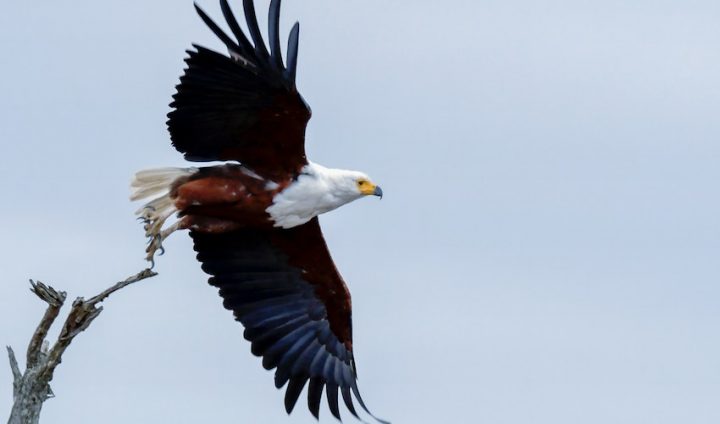Zhuangzi was a great thinker in ancient China. His work, the “Zhuangzi”, contains many magical stories. One of the famous stories in his work is about a huge fish named Kun that can transform into a giant bird called Peng.
Long ago, there was a huge fish named Kun who lived in the Eastern Sea. Kun was so big that it could transform into a bird with huge wings that could span the clouds. But Kun was content with its life in the sea and had no desire to transform into a bird.
One day, a great storm raged across the Eastern Sea, causing massive waves that threatened to engulf everything in their path. Kun knew that it needed to do something to protect itself and decided to transform into a bird to escape the tumultuous sea.
Kun flapped its wings and rose into the air, transforming into a magnificent bird with feathers as white as snow and wings as broad as the sky. This bird was called Peng and it soared through the heavens, free and unencumbered by the sea.
Peng can flew with its wings like clouds hanging from the sky. It flew for ten thousand miles without getting tired. No beast could withstand its strength. Its voice was like the roar of the largest tiger and when it roared, it sounded like a rainstorm. It ate whales and dragons, even the swallowed boats and things hidden in deep waters. The transformation of Kun was truly great.
The story of Kun transforming into Peng is a metaphor for reality. Today, many large companies are typical “left-brained organizations” living in the “red ocean.” Can these companies fly like Peng? Can they become “The Right-Brained Organization” that embraces change and is good at innovation?
How to transform from a traditional organization into “The Right-Brained Organization”? This is a transformation, but we emphasize that “The Right-Brained Organization” is a change within the same gene. It is an awakening, not a replacement. We oppose shock therapy. The larger the company, the more it often needs gradual reform like spring rain.
In 1976, Steve Jobs and Stephen Wozniak founded Apple Computer Company. Their first hugely successful product was the Apple II personal computer. But at the time, the media spotlight was on Wozniak, who developed the Apple II. No one knew who Jobs was then, but everyone knew Wozniak. Jobs was reportedly very angry at the time and kept telling people that it was his idea to have no fan on the Apple II.
At that time, Apple was more like a technology-driven “left-brained organization.” Jobs may have been more willing to believe he was a technical talent at heart. But his right-brain talent couldn’t be hidden. In 1979 Jobs visited Xerox PARC research center and saw a graphical user interface operating system for the first time. His intuition told him that this was the future of the computer industry. When he came back, he assembled a team to develop a graphical interface computer.
But he soon found that Apple’s original technical team could not realize his dream. Their understanding of graphical interfaces was just to make some icons. Jobs had much more complex ideas than that. So he decided to start over and build a new team to develop this new product. He required that new hires have both engineer’s technical skills and artist’s flair. This was actually replicating himself. He told his new hires: I don’t want you to be navy men, but pirates. Those guys were crazy too; one night they sneaked up to the roof of Apple headquarters and hoisted a pirate flag. At the time this caused quite a stir in Silicon Valley. But as a result, this internal startup team of “pirates” often clashed violently with other “navy” teams within Apple.

